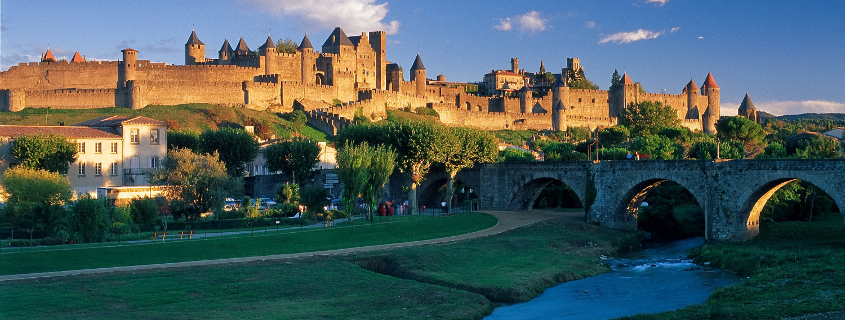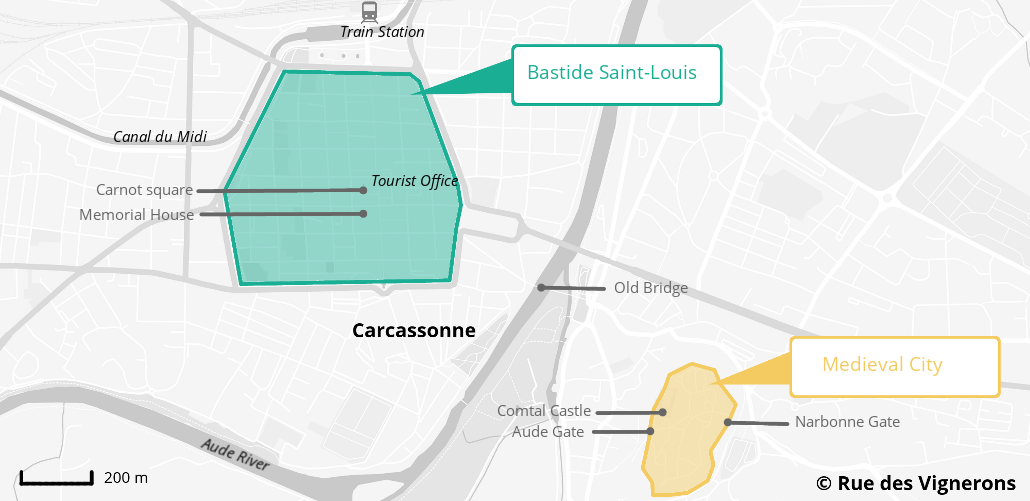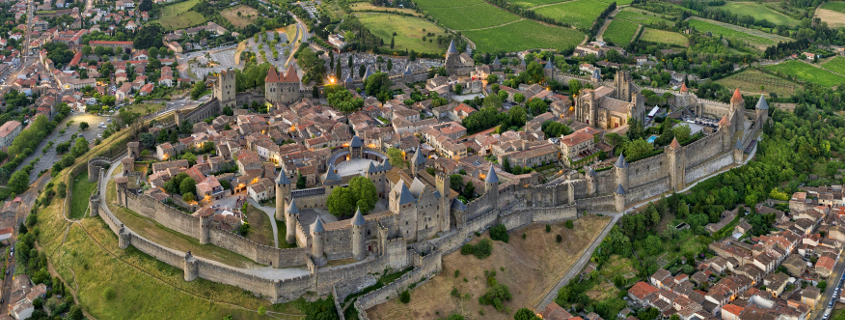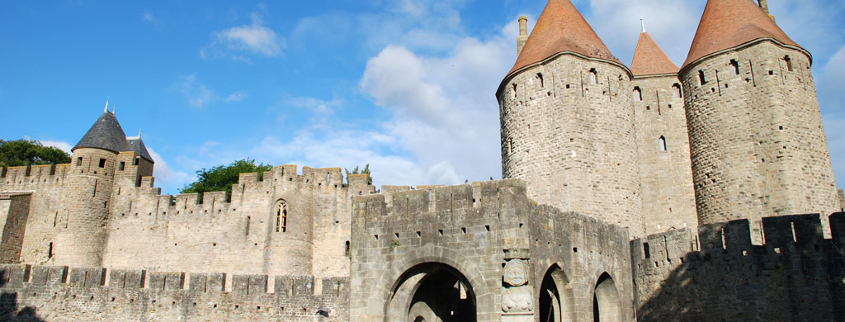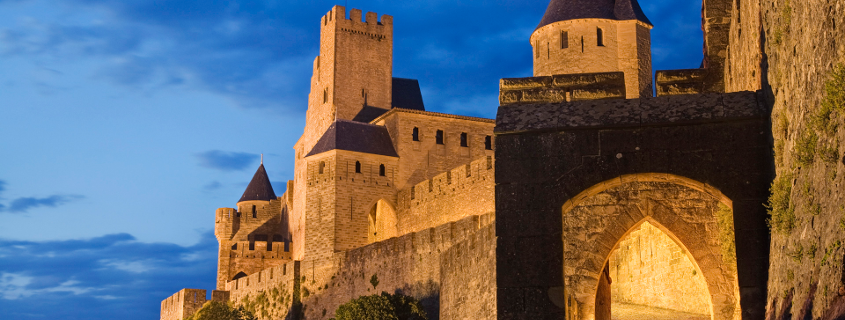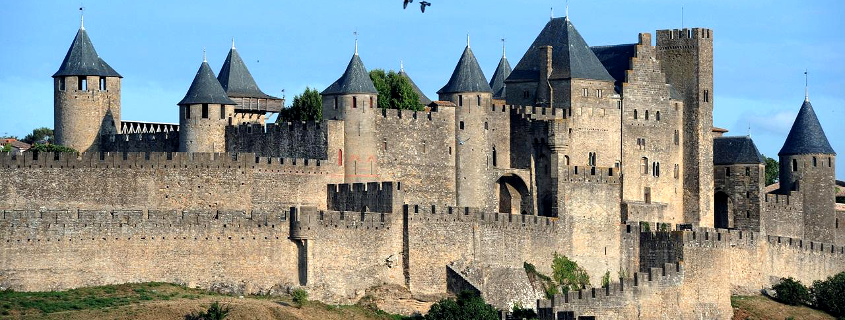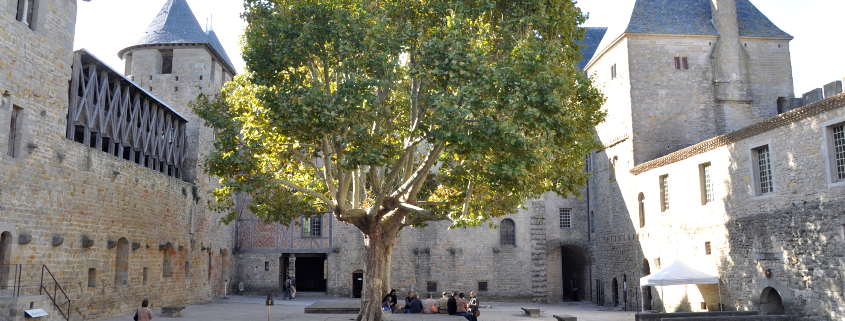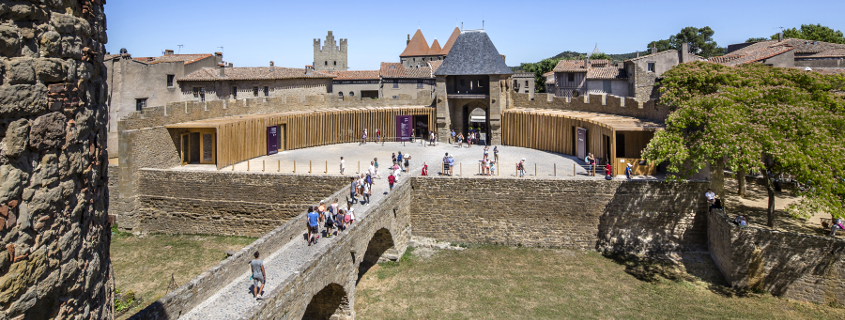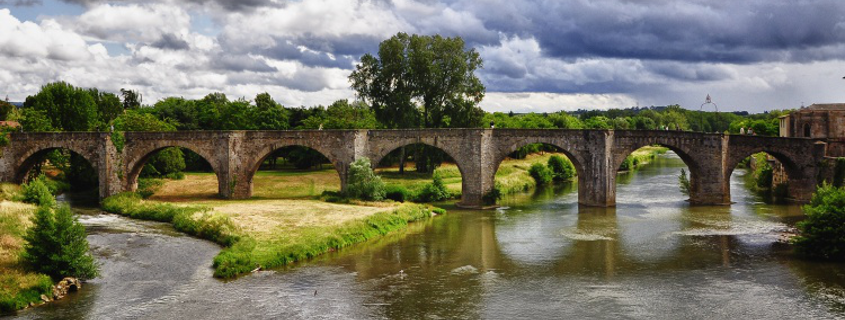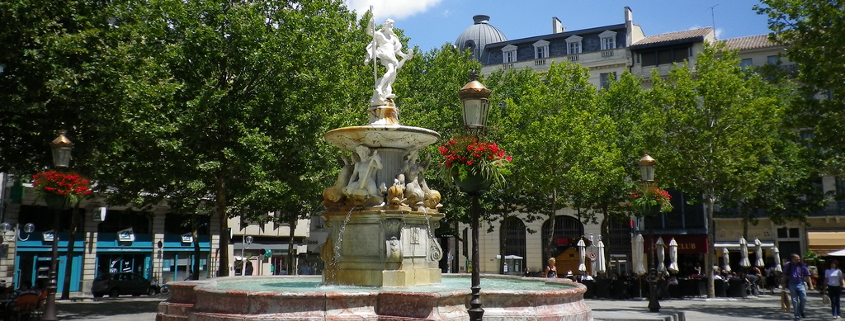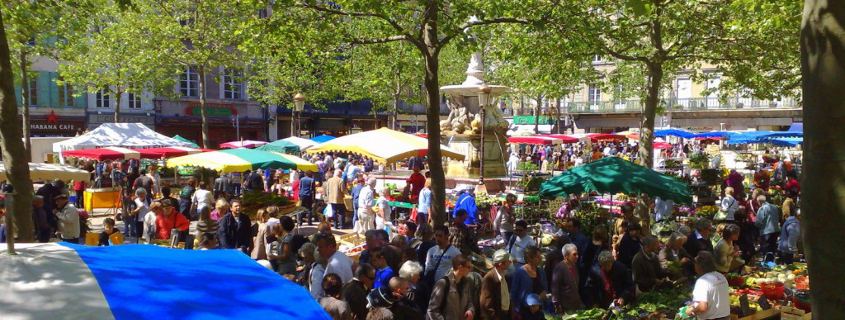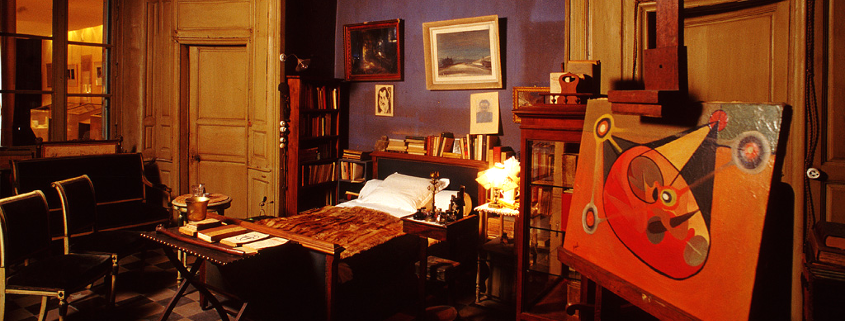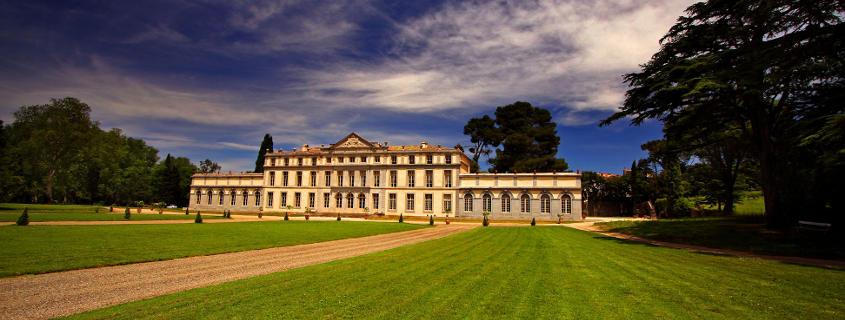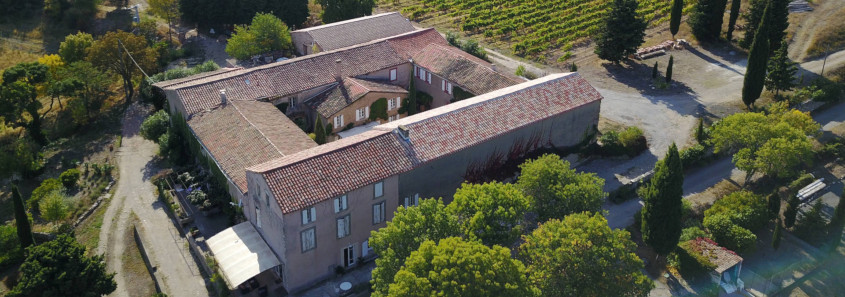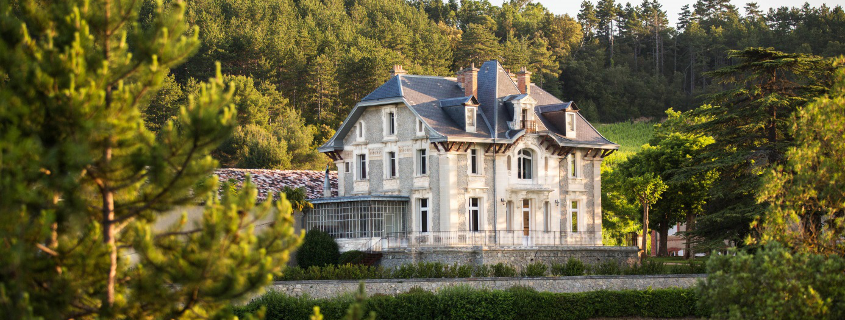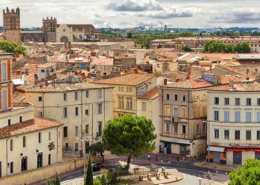What to see in Carcassonne ?
View Carcassonne Castle © camping-lasirene.fr
Halfway between Toulouse and Narbonne, Carcassonne is one of the major tourists centers of the south of France (with 4 million visitors a year), in the Aude department. To visit this medieval city, you will need 1 day or 2 days. If you need some tips visiting Carcassonne, you will find in this article plenty of attractions to do: the walled city and the old town, also called citadel, the castle and its ramparts… There are also other things to do and places to visit near Carcassonne such as local vineyards that can be done during a day trip from Carcassonne.
This attractive city offers two very different faces. On the right bank of the Aude river lies the medieval city, the largest fortress in Europe. Perfect for a walking tour, it contains an exceptional and unique historical heritage and is listed as a UNESCO World Heritage Site since 1997. On the left bank of the Aude river stands the Lower Town, called the Bastide Saint-Louis. This medieval bastide with a checkerboard layout is protected by an amazing defense system and is the current living center of Carcassonne.
You can find many wineries that worth a visit around Carcassonne. Indeed the city is located in the heart of the Languedoc vineyard, one of the largest in France.
Whether with family or friends, discover here our selection of the best places to visit in Carcassonne and its surroundings.
Go directly to the section of your choice: The Medieval city, Comtal Castle, Bastide Saint-Louis, Memorial House, Vineyard of the region
THE MEDIEVAL CITY
The medieval city is a unique historical jewel in France. It is the best-preserved medieval city in the world, which attracts millions of tourists. This Gallo-Roman city is surrounded by two parallel enclosures consisting of 52 towers and 3 km of ramparts.
The City is entirely restricted to pedestrians and is still inhabited by fifty residents. You can enjoy a walk along the ramparts, with a view of the surroundings, the Valley of Aude and the Lower Town. In the evening, the illumination of the ramparts and of the city plunges you into a fantastic setting.
Aerial view of the medieval city© cycling-passion.com
The Narbonne gate is the main entrance of the city. This bastion of the end of the 13th century is guarded by two massive twin spur towers of 30 meters high and protects the Eastern access of the city. On the front gate, you will find a sandstone sculpture of the Lady Carcas watching over the city. The lady Carcas is an imaginary heroine of a local legend who reveals the fantasy origin of the name of Carcassonne. According to the legend, she was the one knowing how to defend and save the city against the troops of Charlemagne.
Narbonne Gate, Eastern entrance © clairegothie.com
In the west part of the City, the iconic Aude Gate gives a breathtaking view on the river. It is particularly well preserved and has kept its typically medieval appearance. If you choose this gate to access the City, you will pass by the Aude climb, a picturesque path starting from the foot of the hill, which will lead you through the Old Bridge, Barbacane Street and the small Saint-Gimer Church.
Aude Gate, Western entrance © medievalarchives.com
COMTAL CASTLE
This huge castle in the heart of the city was erected in the 12th century by the Trencavel, viscounts of the city. During the 12th century, under their rich dynasty, troubadours, poets and scholars from all over the Mediterranean were regularly invited to the courtyard of the castle. It was then transformed into a citadel in 1226. Located at the top of a hill overlooking the Lower Town, it is attached to the Gallo-Roman wall. This massive building of 80 meters long and 40 meters wide is a real “fortress in the fortress” and is a beautiful testimony of medieval military architecture.
Comtal Castle © reddit.com
The lapidary museum is part of the castle and can be visited in a self-tour. It presents the different stages of the history and restoration of the castle, through a rich collection of vestiges from the region of different eras, from antiquity to the 17th century. In addition, you can see a model of the city classified and realized by Louis Lacombe and the castle hosts temporary exhibitions of contemporary art.
Finally, you will have the opportunity to follow a conference tour with a fascinating historical presentation, which will lead you to the most secret corners of the castle such as the tower of the inquisition, former torture chamber.
Embrasure of Comtal Castle © dda-architectes.com
Bastide Saint-Louis
On the left bank of the Aude river, the “new city” was created by St. Louis. In 1257, he ordered the construction of a Lower Town under the medieval city intended to house the inhabitants and keep them away from the Trencavel. The city first develops commercially through the production and export of woollen sheets and supplants the City over the centuries.
Today called Bastide Saint-Louis, it is the commercial and residential city of Carcassonne. This fortified medieval town is organized according to the characteristic of a checkerboard plan, composed of narrow streets that intersect at right angles, gathering around Carnot square.
From the medieval city, it will take you 25 minutes to walk to the Bastide. You will pass by the Old Bridge at the south-east entrance of the Bastide. It is now restricted to pedestrians and is an ideal sightseeing point, from which you can see the city and the Pyrenees on a sunny day. In addition, at night, beautiful lights make the bridge even more fascinating.
Old bridge © zphoto.fr
Carnot is the central square and the very heart of the Bastide. It is a pleasant pedestrian area lined with beautiful bourgeois buildings, plane trees, cafes, terraces and restaurants. It is a must-see if you visit Carcassonne. In the center of the square stands the monumental fountain with pink marble basins dedicated to Neptune, the king of the waters, made in 1770 by the Italian sculptor Barata.
It is the liveliest square of the Bastide and a real meeting area. This is where the market takes place on Tuesday, Thursday and Saturday morning (fruits, vegetables, cheeses, wines…). During Christmas, the square becomes a large ice rink lined with chalets.
Fountain on Carnot square © theculturetrip.com
Nearby, on the Eggenfelden square, a covered-market bring together some fifteen traders who offer the best products of the region: poultry, meat, fish… They are right next to the old grain market. It is today the library of the city with a superb wood frame of the 18th century resting on heavy columns of stones.
Around the market halls, there are some fine bourgeois hotels dating from the 17th and 18th century. These remains of the great cloth era of Carcassonne testify of its rich trading past. Among the most notable, the Senechal House dating back to the 14th century, seat of the current Chamber of Agriculture or the Rolland Hotel of the mid 18th century which houses nowadays the city Hall, with sumptuous staircases and carved decorations on the front door.
Market on Carnot square © camping-grandsud.com
MEMORIAL HOUSE
On Carnot square, the memorial house is a beautiful mansion of the 18th century where the writer and illustrious poet of Carcassonne, Joë Bousquet (1897-1950) moved in in 1924. Paralyzed and bedridden due to an injury during World War I, he never left his room for the last 25 years of his life. First attracted by the surrealists, he received in his room many artists and major intellectuals of the time, among whom we can mention Dali, Max Ernst, Louis Aragon, Simone Weil and Paul Valery.
You can see a permanent exhibition on the life and work of Joë Bousquet. Two large living rooms with magnificent painted ceilings and 17th century wall paintings host permanent exhibitions of painting and literature, as well as temporary exhibitions that change every month, linked to the cultural heritage of the region.
Memorial House © aude.fr
VINEYARD OF THE REGION
The Languedoc vineyard is one of the oldest and largest vineyards in France. The first vines were planted there by the Greeks in the 5th century BC. The Mediterranean climate of Languedoc is ideal to grow vines. In addition to the climate, the richness of the terroirs and the diversity of the soils allow to obtain very varied wines, in red, white and rosé.
We have selected wineries near Carcassonne where you will discover their property, their cellars, and their wines.
Wineries close to Carcassonne
To begin your discovery of the Languedoc vineyards, you can go to the Château of Pennautier, located at the gates of Carcassonne, at 5 kilometers. This castle is part of the Lorgeril group, a structure belonging to a historic wine growers’ family in Languedoc since the 17th century. This family has a rich historical past and owns 6 wineries in the South of France, including the Château of Pennautier. The winery itself is a beautiful historic structure, with an on-site restaurant that offers splendid wine and food pairings. They offer a wide range of wines (white, red, rosé), mostly in local appellation Cabardès.
You will discover in detail their production through a visit of the cellars, made by a sommelier. On weekdays, you can visit the beautiful park of the castle and in summer you can even visit the interior of the castle.
Château of Pennautier, Pennautier
15 minutes North of Carcassonne, in the foothills of the Montagne Noire in the Minervois, discover the Château La Villatade, a very old 130-hectare winery composed of vineyards, olive groves, forests and scrubland. The winemakers will be delighted to introduce you to their work, their passion and their wines, regularly rewarded in specialized guide.
Château La Villatade, Salleles Cabarde
Finally, you can enjoy a visit of the splendid Domaine de Baronarques winery, located at 20 kilometers south of Carcassonne. The place is beautiful, and the winery is located at the heart of the vineyard. This historic winery already existed in the 17th century. It was bought in the late 1990s by the Rothschild family. This large family owns many wineries, including Grands Crus Classés in Bordeaux. During the visit, you will discover its rich historical past. In addition, the winery offers an atypical workshop where you can discover the vineyard in SUV. This activity gives you a good overview of the different grape varieties and local terroirs and allows you to understand the organization of the vineyard.
Baronarques winery, Limoux
We wish you a pleasant discovery of Carcassonne and of the region!

